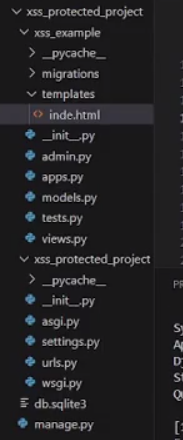
|
|
Django protects your website from XSS attacks by employing CSRF tokens, unique for each user, hidden in forms. This article will show how to implement Cross-site scripting (XSS) protection in Django. What is Cross-site scripting (XSS) Protection in Python Django?In Django, they keep your website safe from XSS attacks by using CSRF tokens. These tokens are unique for each user and hidden in forms. When someone submits a form, Django checks if their token matches the one assigned to their session. This stops bad scripts from getting in, ensuring only legitimate users can interact with your site. Implementation of Cross-Site Scripting (XSS) Protection in DjangoBelow, are the implementations of Cross-site scripting (XSS) protection Django in Python: Starting the Project FolderTo start the project use this command django-admin startproject xss_protected_project To start the app use this command python manage.py startapp xss_exampleNow add this app to the ‘settings.py’ INSTALLED_APPS = [ File Structure  Setting Necessary Filesviews.py: Django view function, urls.py : Below are the urls.py file which connect views.py file to HTML file. Creating GUIxss_example/templates/inde.html : HTML template, ‘index.html’, creates a form for user input with a textarea field. The form sends a POST request with the user’s input. To mitigate XSS vulnerabilities, the user input is rendered using the Deployement of the ProjectRun these commands to apply the migrations: python3 manage.py makemigrations Run the server with the help of following command: python3 manage.py runserverOutput
Video Demonstration |
Reffered: https://www.geeksforgeeks.org
| Django |
| Related |
|---|
| |
| |
| |
| |
| |
Type: | Geek |
Category: | Coding |
Sub Category: | Tutorial |
Uploaded by: | Admin |
Views: | 14 |
